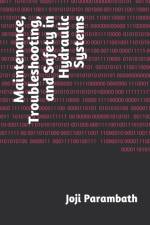av Joji Parambath
137
The second edition of this publication presents an extensive guide to single-function and multi-function cartridge valves. It provides a detailed coverage of their concepts, configurations, and circuits for check, directional, flow, and pressure control functions. The book also includes information on active logic and proportional cartridge valves, as well as the constructional features of integrated manifolds. Additionally, it offers a comprehensive analysis of the characteristics, specifications, advantages, applications, and maintenance of cartridge valves. The introduction of cartridge valves in the 1950s marked a significant milestone in the design of hydraulic valves. The basic cartridge valve consists of an insert assembly that fits into a cavity machined into a manifold. Initially, cartridge valves were designed to perform a single function, and a cavity was created to accommodate the valve. Over time, the technology evolved to include multifunction and integrated circuit features, with many cartridge valves incorporated into a single manifold block. In recent years, there have been numerous advancements aimed at reducing leakage, complexity, and size, while improving the reliability, efficiency, and cost-effectiveness of cartridge valves. The book is structured clearly and concisely, with multiple circuits presented in various positions for quick comprehension. It is an invaluable resource for professionals and academics seeking to expand their knowledge of cartridge valves.




























